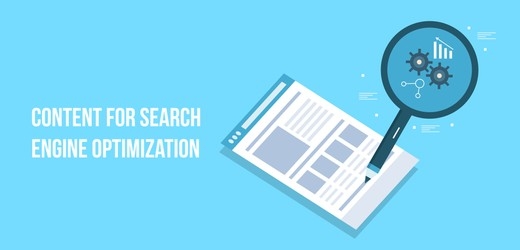Content reigns supreme in the world of digital marketing. However, creating great content is insufficient if it does not receive the attention it deserves. This is where content optimization can help. You can increase the visibility of your content and drive more traffic to your website by optimizing it. In this article, we will define content optimization, why it is important, and how to do it effectively.
Introduction
Producing excellent content is only half the battle. The other half is getting your content in front of your intended audience. Here is where content optimization comes into play. Content optimization is the process of making your content more visible and engaging to your target audience. You can increase website traffic, generate more leads, and ultimately grow your business by doing so.
What is Content Optimization?
The process of improving the quality and relevance of your content in order to increase its visibility and engagement with your target audience is known as content optimization. This includes optimizing the title, headings, content structure, images, internal and external links, metadata, and mobile-friendliness of your content.
Why is Content Optimization Important?
Content optimization is important because it increases the likelihood that your content will be seen by your intended audience. You can improve your website’s search engine ranking, attract more traffic, generate more leads, and increase conversions by optimizing your content. Furthermore, content optimization can assist you in establishing brand authority, building trust with your audience, and improving overall user experience.
Understanding Your Audience
Before you begin optimizing your content, you must first understand your target audience. Understanding their needs, interests, pain points, and search behavior is essential. Understanding your audience allows you to create more relevant and engaging content for them, as well as optimize it for the keywords and phrases they are searching for.
Keyword Research and Targeting
Keyword research and targeting are critical components of content optimization. This entails researching the keywords and phrases used by your target audience and optimizing your content to rank for those keywords. To conduct keyword research and identify high-potential keywords, you can use tools such as Google Keyword Planner, SEMrush, and Ahrefs.
Crafting Engaging Headlines
When your audience comes across your content, the first thing they see is your headline. As a result, it’s critical to create engaging headlines that capture their attention and entice them to click through. Your headline should be descriptive, captivating, and include your primary keyword.
Writing Quality Content
After you’ve created an intriguing headline, it’s time to focus on creating high-quality content. Your content should be educational, entertaining, and well-structured. It should also include relevant images and videos, as well as be optimized for your primary and secondary keywords.
Formatting Your Content
Another important aspect of content optimization is formatting. Short paragraphs, bullet points, and subheadings should make your content easy to read and scan. This allows your audience to consume your content and find the information they seek more easily.
Adding Visual Elements
Including visual elements such as images, videos, and infographics in your content can make it more engaging and memorable. Visual elements can also be used to break up long blocks of text and make your content easier to scan.
Internal Linking
Internal linking is the practice of linking to other pages on your website from within your content. This can help improve the navigation and user experience of your website, as well as signal to search engines which pages on your website are important. Use descriptive anchor text that accurately describes the linked page when internal linking.
External Linking
External linking is the act of linking to other websites from within your content. This can help provide context and value to your audience while also signaling to search engines that your content is of high quality and relevant. When using external links, make sure to use reputable and relevant sources.
Metadata Optimization
Metadata optimization entails improving your content’s search engine visibility by optimizing the title tag, meta description, and URL. Your title tag should include your primary keyword and be no more than 60 characters in length. Your meta description should be descriptive, include your primary and secondary keywords, and not exceed 155 characters.
Mobile Optimization
With mobile devices accounting for more than half of all internet traffic, optimizing your content for mobile devices is critical. This includes employing responsive design, ensuring quick load times, and employing mobile-friendly formatting and images.
Measuring and Tracking Results
After you’ve optimized your content, you should measure and track its performance. You can track your website traffic, engagement, and conversions using tools like Google Analytics and SEMrush. This can assist you in determining which content is performing well and which areas require improvement.
Common Content Optimization Mistakes to Avoid
There are a few common content optimization blunders to avoid. Keyword stuffing, using clickbait headlines, ignoring mobile optimization, ignoring user intent, and using irrelevant or low-quality external links are all examples.
Conclusion
Content optimization is an essential component of digital marketing. You can grow your business by optimizing your content and increasing its visibility and engagement with your target audience. You can improve the quality and relevance of your content and attract more traffic to your website by understanding your audience, conducting keyword research, crafting engaging headlines, writing quality content, formatting your content, adding visual elements, internal and external linking, metadata optimization, and mobile optimization.
FAQs
- What is content optimization?
- The process of improving the quality and relevance of your content in order to increase its visibility and engagement with your target audience is known as content optimization.
- Why is content optimization important?
- Content optimization is important because it increases the visibility of your content to your target audience, improves your website’s search engine ranking, attracts more traffic, generates more leads, and increases conversions.
- How do you optimize your content for search engines?
- Conduct keyword research and targeting, create engaging headlines, write quality content, format your content, add visual elements, internal and external linking, metadata optimization, and mobile optimization to optimize your content for search engines.
- What are some common content optimization mistakes to avoid?
- Keyword stuffing, using clickbait headlines, ignoring mobile optimization, ignoring user intent, and using irrelevant or low-quality external links are all common content optimization mistakes to avoid.
- How do you measure and track your content optimization results?
- To track your website traffic, engagement, and conversions, you can use tools like Google Analytics and SEMrush to measure and track your content optimization results.
As a London-based Technical SEO Strategist, I've worked with top firms like BT.com, EE.co.uk, Tripadvisor, Yopa, and various digital marketing and cloud computing companies. My extensive experience in SEO, including outreach, helps me create impactful strategies informed by the latest industry trends, ensuring innovative solutions for diverse industry needs.

